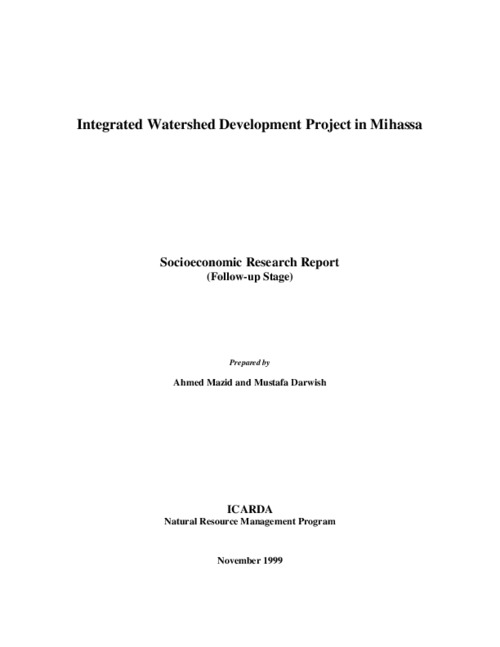Integrated Watershed Development Project in Mihassa
This report summarizes the results obtained during 1998/99 season related to the socioeconomic research component of Integrated Watershed Development Project in Mihassa. The Project aims at developing sustainable practices of water harvesting and water spreading techniques, under very arid conditions, to produce sustainable increases in the amount of forages, and to improve grazing and range lands available for sheep and goats. In 1989, the Syrian Government established, as a part of this project, Mihassa Research Station, which is located at about 130 km to the northeast of Damascus City.





